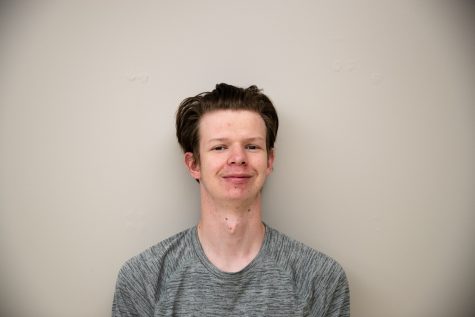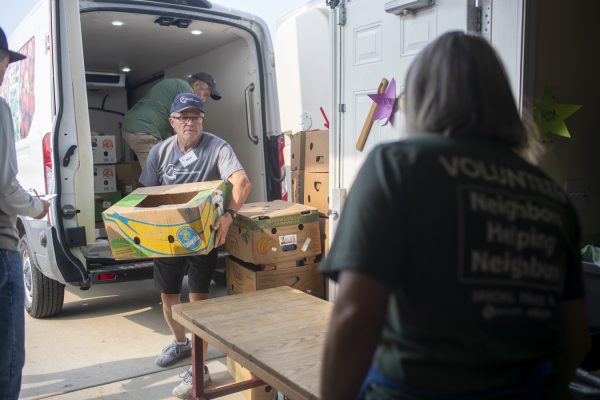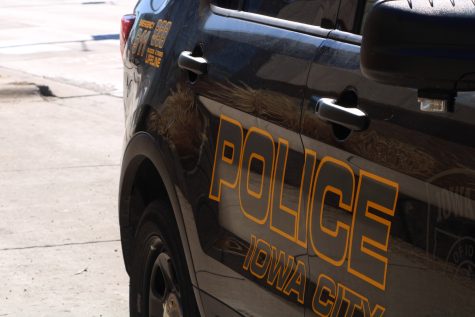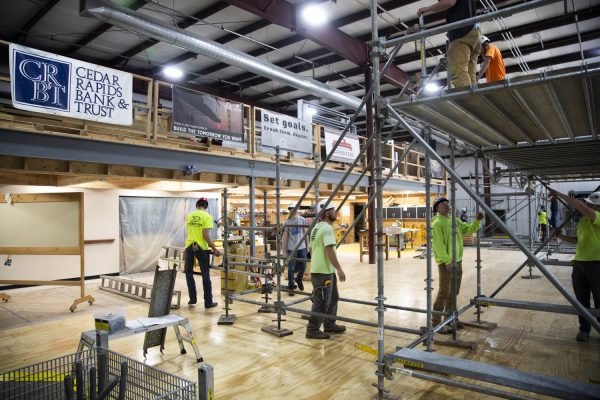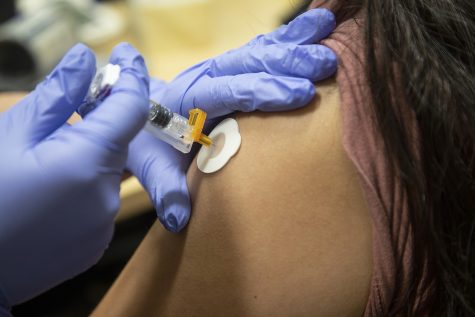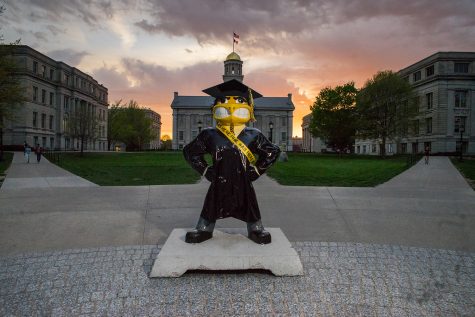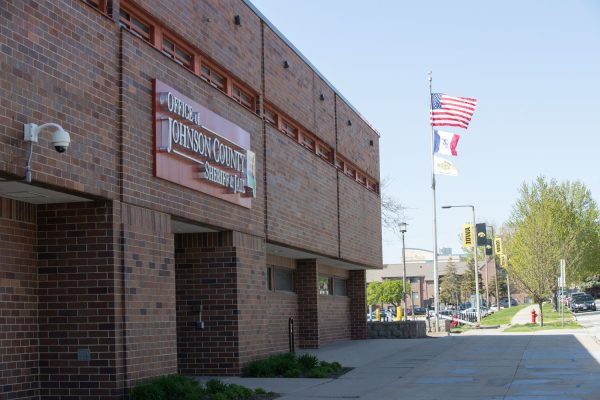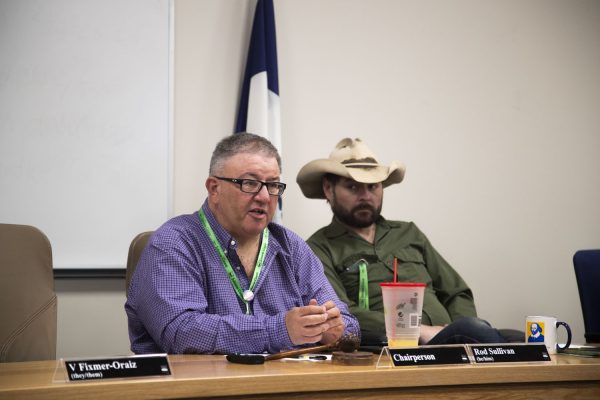Johnson County receives grant to improve community transportation
Johnson County received a 2021 Community Mobility Design Challenge grant from the Community Transportation Association of America. The grant aims to improve access to affordable transportation.
Johnson County Mobility Coordinator Kelly Schneider poses in front of Iowa City Buses at the Downtown Interchange in Iowa City on November 09 2021.
November 10, 2021
Johnson County will use new funding to study how to improve access to affordable transportation in the county.
The county received a 2021 Community Mobility Design Challenge grant from the Community Transportation Association of America.
The funds, which were approved at the Johnson County Board of Supervisors meeting on Oct. 28, will be used to help residents who are experiencing barriers as they seek economic opportunities, including employment, education, and childcare.
Johnson County was one of four communities to receive a grant in the U.S.
Kelly Schneider, Johnson County’s social services mobility coordinator, said she submitted the application in September and was surprised the grant was approved because this was the first time she wrote a grant.
“This was my first time leading a team of this many people, so I was really surprised, but I was also really excited because I tried doing this for a while,” she said. “I’m confident that we’ll be able to find what fits right for our community.”
Johnson County will receive almost $17,000. Schneider said this amount is solely for the planning stage of the accessibility improvement project to identify what is the best solution based on community needs.
“The dollars that we’re starting with is really to spend a lot of time designing a solution that fits the middle of three key components: customer desirability, financial viability, and operational feasibility,” she said.
Schneider said there are eight other team members working on this project.
Missie Forbes, executive director at the child care center 4Cs of Johnson County and member of the grant team, said the grant is necessary because she has seen many low-income families encounter transportation barriers to access work and child care.
“I think that we have great transit systems in our community, but because life is not black and white, sometimes those transit systems don’t work for everyone,” she said.
Schneider said she has noticed disparities in the county’s transportation during her four years in her position, especially for people who start their shifts early in the morning.
“You might be able to get a bus to your job or maybe home from your job, but it’s not always both directions,” Schneider said.
Amy Conrick, deputy director of national projects for the Community Transportation Association of America, said that for counties to be approved for the grant, they must have provided research ahead of time and conducted one-on-one interviews with at least 10 community members who are affected by the issue.
“[Johnson County] was selected because they did a really good job with their research and that’s what we asked them to do,” she said.
Conrick said a county in Kansas that didn’t have access to public transportation at the time successfully completed all stages of the grant program.
“A rural county in Kansas never had any public transit in their county, and now they do because of our process and our grant,” Conrick said. “They’re also providing trips directly for people to health care in cities 100 miles away.”
The planning phase of the grant ends in March of 2022. If the grant team completes phase one, then they can apply for the learning launch grant in phase two of the Community Mobility Design Challenge.
Schneider said her team is still in its early stages of planning.
“We’re really just getting our work started,” Schneider said. “Once we get to March at the end of the grant period, we will have an opportunity to start testing a solution, and I think that’s what is most exciting about this project.”









